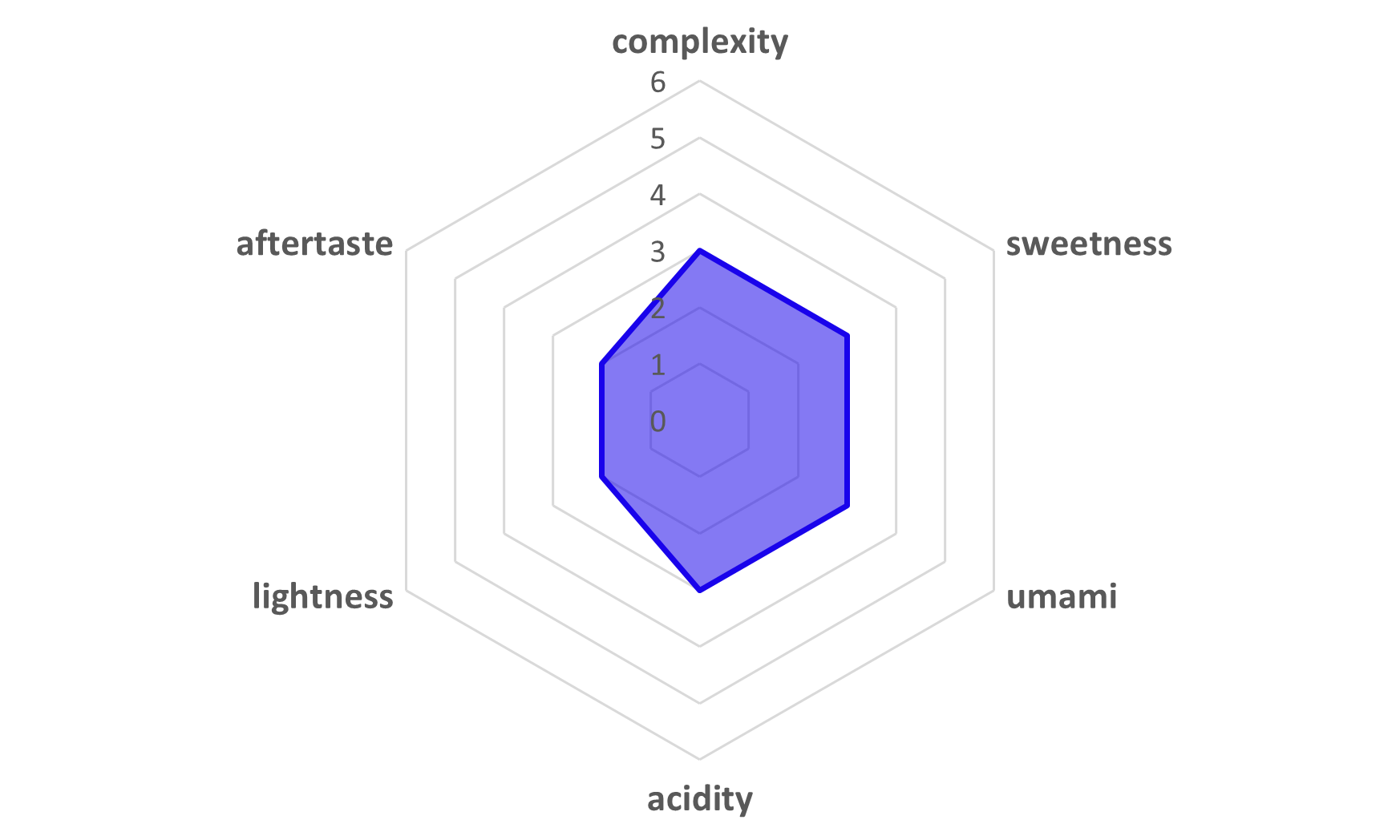なし
日本酒の甘さや辛さを表す指標。一般的にマイナスは甘さ、プラスは辛口を表します。
酸味の総量を数値化したもの。酸度が高いほどキレとコクがあり、低いほど軽快で甘みがあります。
外側から削り取った後に残ったお米の割合。表層を削り落とすことで、独特の香りと不純物のない酒を造ることができます。
"Aromatic aroma, which comes from the fact that the rice polishing ratio is not high. The aroma is like that of deep-roasted coffee or barley tea. As the temperature rises, nuances of raw almonds and apricots also emerge. The taste has a natural sweetness, acidity and lingering aftertaste, which is typical of sake. The umami is also worthy of an orthodox sake, and the flavour of the delicious rice comes through honestly. Recommended served cold or at room temperature."
Professional French Chief & YUKARI Special Ambassador
"It is characterized by a rich aroma of muskmelon and muscat, with refreshing accents of bamboo and chervil. It harmonizes with the expansive aroma of chestnuts and freshly pounded mochi (rice cake), along with the mineral notes of lime, biscuit, and the delightful fragrance of roasted nuts. The flavor overall is mellow and gentle. It has a substantial umami taste with a hint of maturity. Despite belonging to the regular sake category, it doesn't exhibit any negative aspects from added alcohol. Instead, it contributes to a pleasant sharpness in the aftertaste. The finish is short. Recommended serving temperature ranges from 20°C to 60°C, allowing for a wide range of options. Generally, it is recommended to enjoy it warm, without chilling it excessively. A large porcelain guinomi (sake cup) is recommended, with a straight shape that allows the aroma to be well-perceived without being trapped."
Sommelier of Sake / Sake Diploma & YUKARI Special Ambassador









